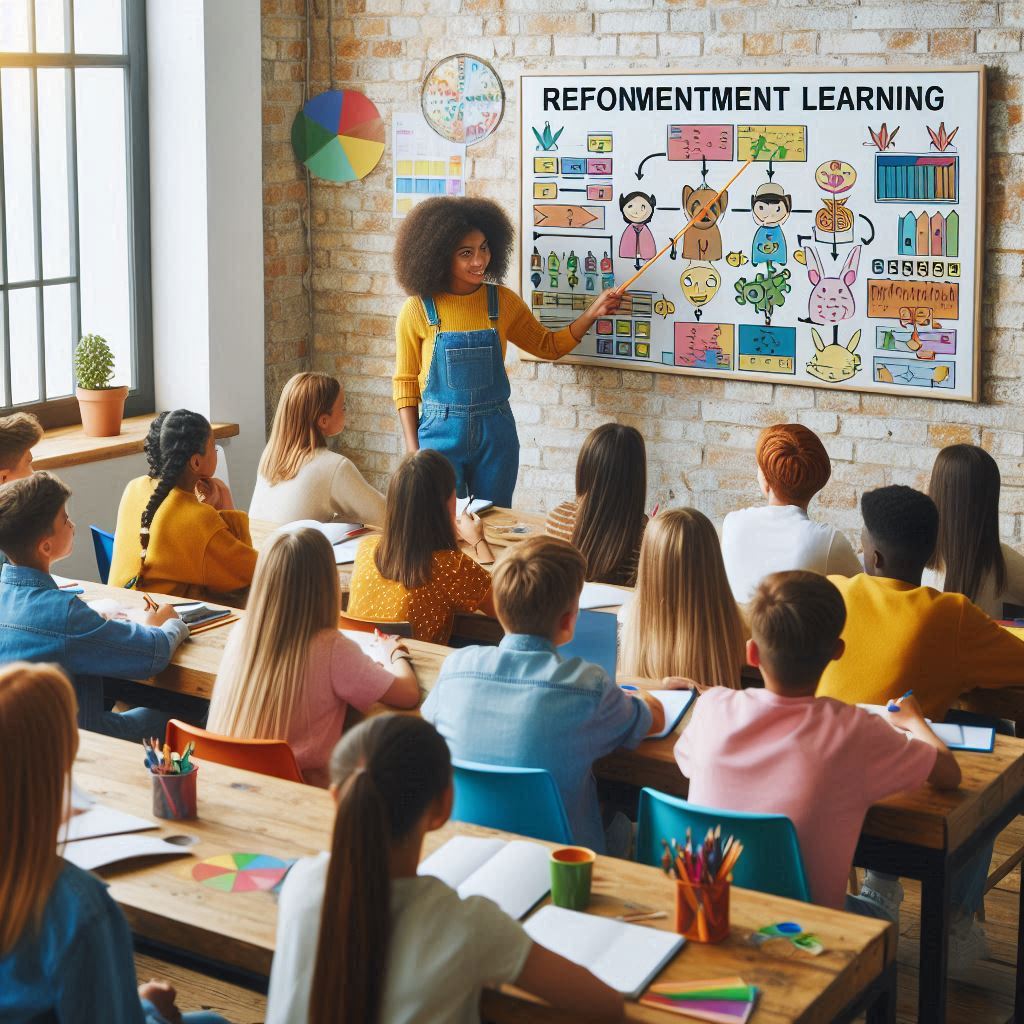Introduction to Reinforcement Learning
Reinforcement Learning (RL) is a subfield of machine learning where an agent learns to make decisions by interacting with an environment. It is inspired by behavioral psychology, focusing on how agents ought to take actions in an environment to maximize cumulative rewards. Unlike supervised learning, where the model is trained on labeled data, RL emphasizes learning from experiences and feedback through rewards or penalties.
At its core, reinforcement learning involves an agent, an environment, a set of actions, and a reward function. The agent observes the state of the environment, takes an action, and receives feedback in the form of a reward. Over time, the agent aims to learn a policy that maps states to actions in a way that maximizes the total expected reward.
One of the most significant characteristics of reinforcement learning is the trade-off between exploration and exploitation. The agent must explore the environment to discover rewarding strategies while exploiting known strategies to maximize rewards. This delicate balance is fundamental to achieving optimal long-term performance.
Reinforcement learning has its mathematical foundations in the framework of Markov Decision Processes (MDPs). MDPs provide a formalism for modeling decision-making situations where outcomes are partly random and partly under the control of the agent. An MDP consists of states, actions, transition probabilities, and reward functions.
Policies are at the heart of reinforcement learning. A policy defines the agent’s behavior at a given time. It can be deterministic, where a specific action is chosen for each state, or stochastic, where actions are chosen based on a probability distribution. The goal of the agent is to learn an optimal policy that yields the highest cumulative reward.
The value function is another essential concept in RL. It estimates the expected cumulative reward an agent can obtain from a particular state (or state-action pair). The value function guides the learning process and helps the agent evaluate the desirability of different actions.
There are several methods for solving reinforcement learning problems. One of the classical approaches is Dynamic Programming (DP), which requires a complete model of the environment. While DP is effective for small-scale problems, it becomes computationally expensive for large state spaces.
Monte Carlo methods offer an alternative by estimating value functions based on sample episodes. These methods do not require a complete model of the environment and work well for episodic tasks. However, they rely on the law of large numbers and need many episodes to converge to accurate estimates.
Temporal-Difference (TD) Learning combines the benefits of DP and Monte Carlo methods. TD learning updates estimates based in part on other learned estimates, without waiting for a final outcome. Popular TD methods include Q-learning and SARSA, which are widely used in various applications of reinforcement learning.
Q-learning is an off-policy TD control algorithm that seeks to learn the value of the optimal policy, regardless of the agent’s current actions. It maintains a Q-table that stores the expected utility of taking a given action in a given state and updates this table iteratively using the Bellman equation.
SARSA (State-Action-Reward-State-Action) is an on-policy algorithm, meaning it learns the value of the policy being followed by the agent. Unlike Q-learning, which always assumes the agent acts optimally, SARSA updates its values based on the actual actions taken by the agent.
Function approximation is crucial for applying reinforcement learning to complex environments with large or continuous state spaces. Instead of using a Q-table, function approximators like neural networks are used to estimate value functions. This forms the basis of Deep Reinforcement Learning.
Deep Reinforcement Learning (Deep RL) combines deep learning and reinforcement learning principles. It uses deep neural networks to approximate policies and value functions. Deep Q-Networks (DQN) are a notable example, popularized by their success in mastering Atari 2600 games using raw pixel inputs.
The introduction of DQNs by DeepMind marked a major breakthrough, demonstrating that agents could learn to play video games at human-level performance using only screen pixels and reward signals. The key innovation was the use of experience replay and target networks to stabilize training.
Policy Gradient methods are another important class of algorithms in reinforcement learning. Unlike value-based methods that learn value functions and derive policies from them, policy gradient methods directly optimize the policy itself. These methods are particularly effective in high-dimensional or continuous action spaces.
